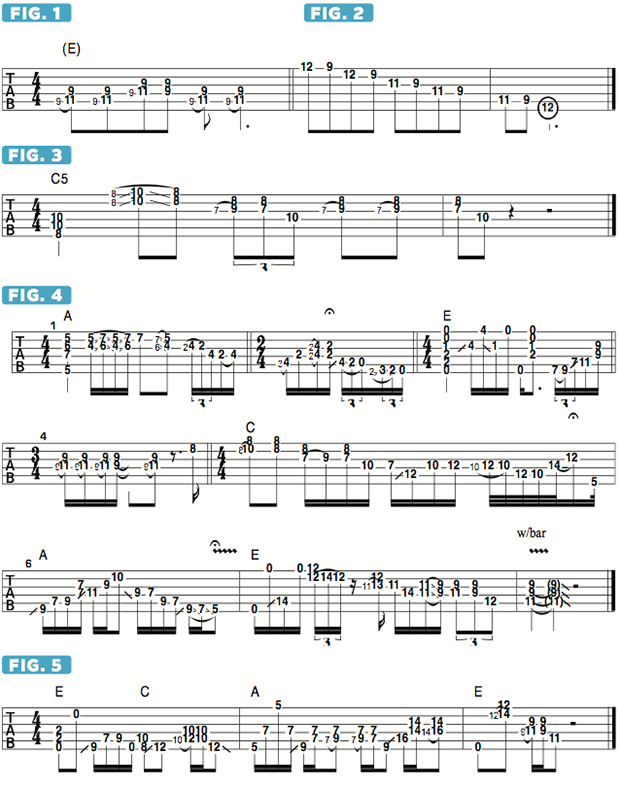Hello All Steemit Guitarist, Lets check it for a minutes ok .. but for first your guitar , cigarette and a cup coffee must stand beside us ,,, ahahaha ...
In FIGURE 1, my index finger is barred across the A, D and G strings at the ninth fret, and I use my ring finger to hammer-on to the 11th fret on the A and D strings, creating the sound of E/G# along with a quick reference to A/C#. The notes that are accentuated here are the second, third, fifth and sixth of E, and all of those intervals are found within the E major pentatonic scale, as illustrated in FIGURE 2.
I will use those pitches for chordal improvisation when playing over the E chord. When I switch to the C chord, I’ll use the notes of C major pentatonic—C D E G A—to create two-note harmonies to embellish the sound of C major. The same approach can be applied to the A chord, using A major pentatonic—A B C# E F#—played similarly in harmonized two-note pairs, as shown in bars 1 and 2 of FIGURE 4.
In bar 3, I switch back to E and shift down to the lower area of the fretboard, followed by a return to ninth position, as demonstrated in FIGURE 1. Bar 5 features a return to C and more chordal embellishment based on C major pentatonic.
In bar 6, on the switch to A, I instead opt to play a single-note melodic line based on A major pentatonic, and in bars 7 and 8 I return to E and navigate through harmonized note pairs in E major pentatonic in a similar manner. Let’s say the chords in the progression change more frequently: in FIGURE 5, I play two beats of E then two beats of C, followed by a full bar (four beats) of A. Once you have these shapes down, experiment with the myriad of ways in which one can weave interesting rhythm parts based on the techniques illustrated here.
#music #guitar #guitarist #blues #jimihendrix #pentatonic #licks #rythm #riffguitar #steemit #steemitmusic
